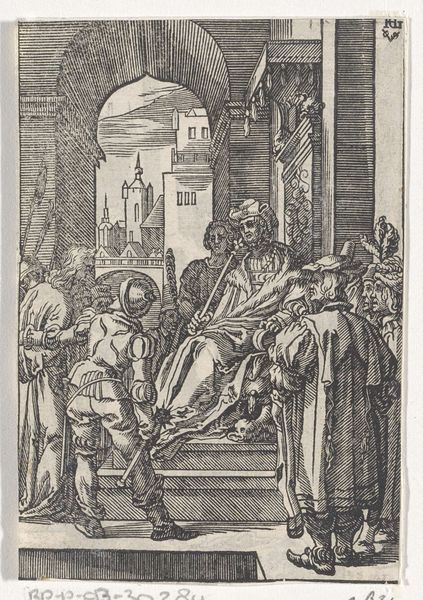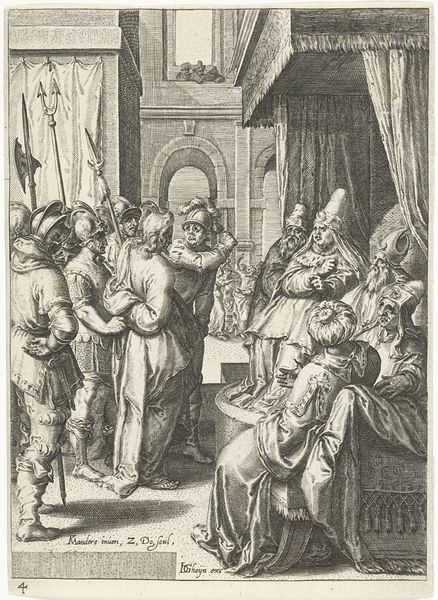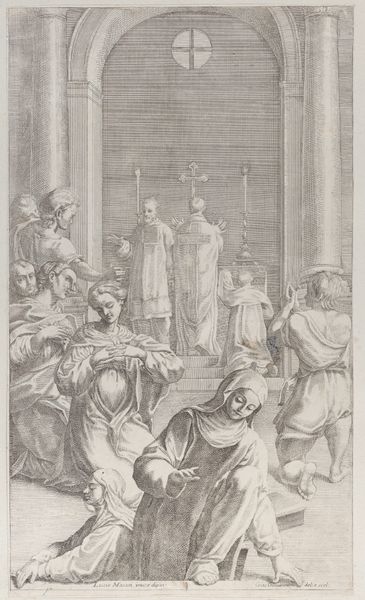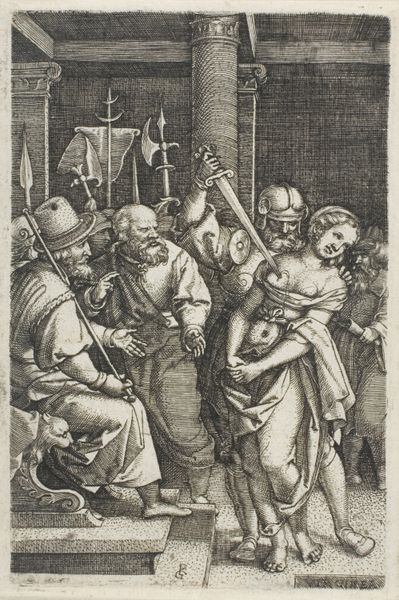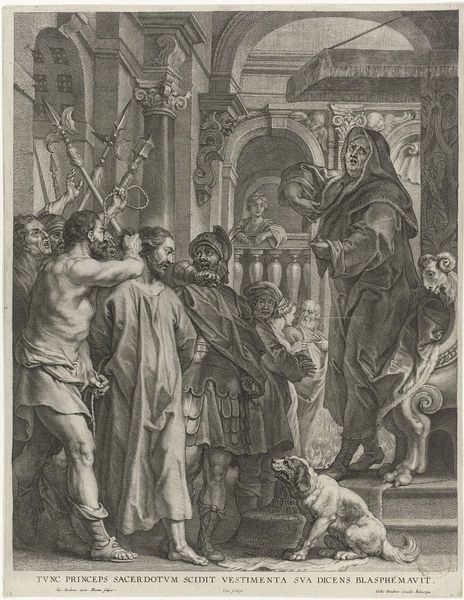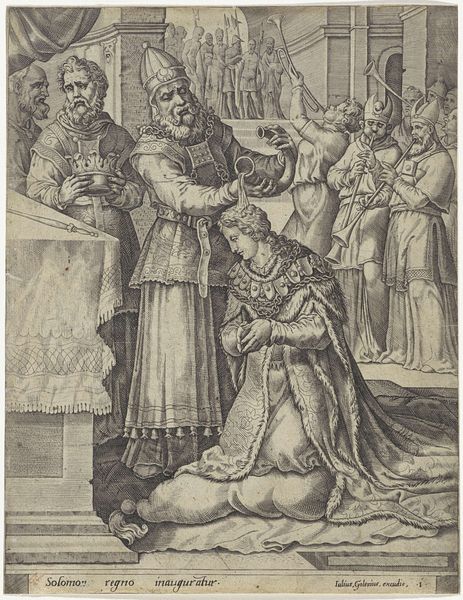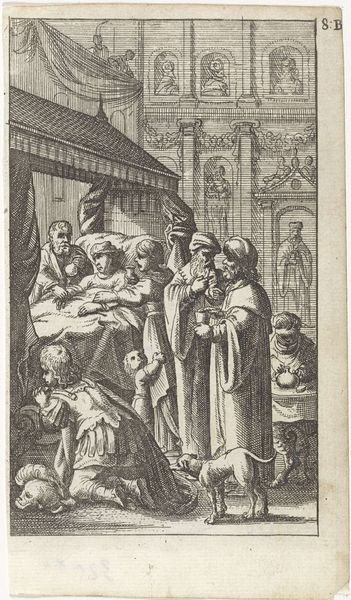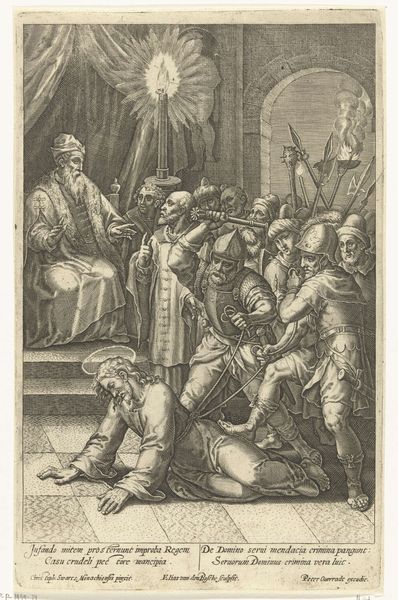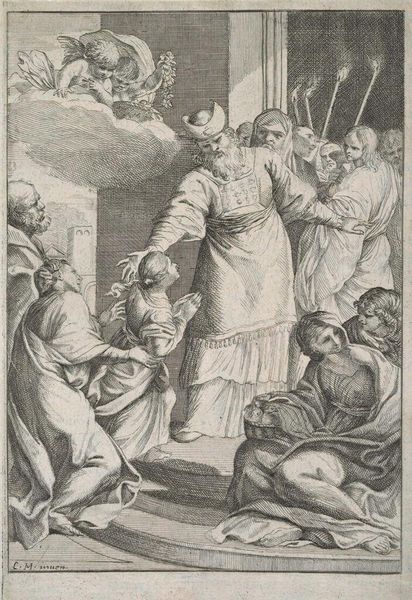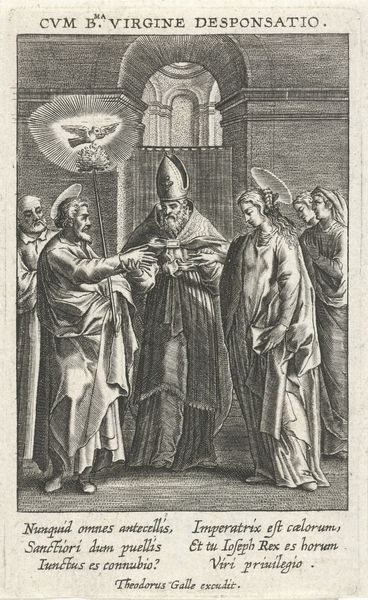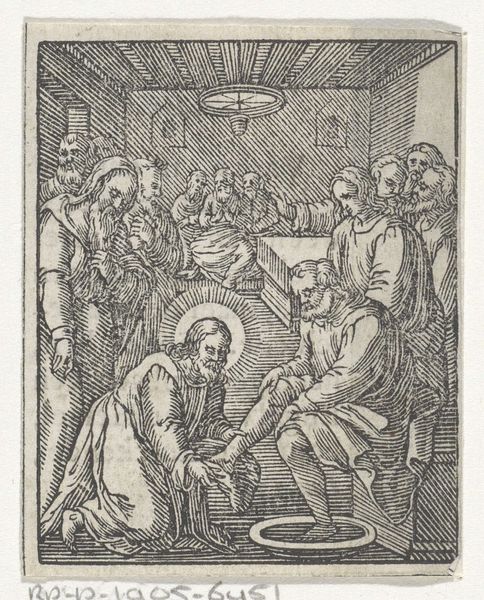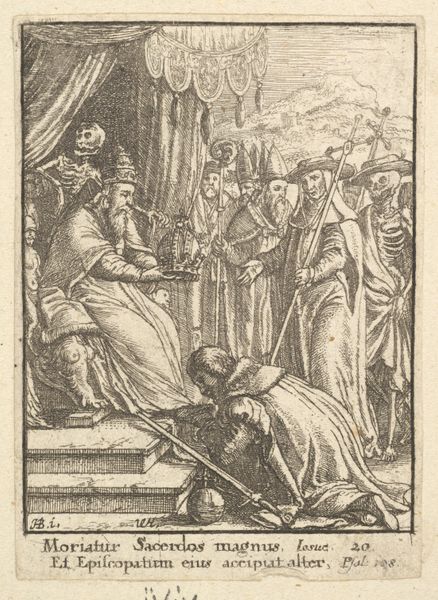
print, engraving
#
narrative-art
#
baroque
# print
#
pen sketch
#
pencil sketch
#
figuration
#
history-painting
#
engraving
Dimensions: height 161 mm, width 121 mm
Copyright: Rijks Museum: Open Domain
Curator: This is Justus van den Nijpoort's "Presentation of Christ in the Temple," an engraving made sometime between 1635 and 1692. The image shows a religious ceremony taking place in what looks to be a highly adorned temple. Editor: The scene has a dramatic chiaroscuro effect despite its monochromatic medium. There's an almost palpable sense of reverence communicated by the tight compositions and focused expressions. Curator: Nijpoort, active during the Baroque period, was part of a larger workshop tradition. Engravings like these weren't always viewed as standalone masterpieces but served as crucial tools for disseminating images and ideas more broadly. The choice of the medium suggests a purpose beyond aesthetic admiration—consider the implications for labor and its economic impact. Editor: I’m drawn to the lines; observe how they converge and diverge to build form and shadow, to shape both space and our perception. Light emanates from the infant Christ, drawing your gaze and adding depth. I think about the composition. Its careful balancing—how all figures lead back to Jesus. The artist has considered visual dynamics of shape. Curator: The material realities dictate this composition, I think. An engraving enables mass production, allowing this scene, rich in theological meaning, to enter diverse socio-economic strata. It democratizes art in its own way, serving religious didactic purposes that transcend conventional gallery settings. The function overrides individual expression; or, in fact, determines it. Editor: Functionality, of course, plays its part, yet dismissing personal artistry overlooks intentional visual elements that structure your emotional responses. The expressions captured, the lines creating drama, invite something deeply moving beyond dissemination. Don’t the swirling lines imply intense, passionate, spiritual experiences that connect us through art to divine transcendence? Curator: I cannot deny that Nijpoort achieved artistic grace here. Considering his work through a lens of materiality, production and societal reach contextualizes his accomplishments. His “Presentation of Christ” extends beyond surface allure—reflecting an ethos intrinsic to art in the service of larger communal, ideological and social frameworks. Editor: Indeed, by examining it through both structure and social environment, we gain deeper insight, recognizing cultural context enriching artistry. This close visual and historical consideration makes engaging art rewarding.
Comments
No comments
Be the first to comment and join the conversation on the ultimate creative platform.
